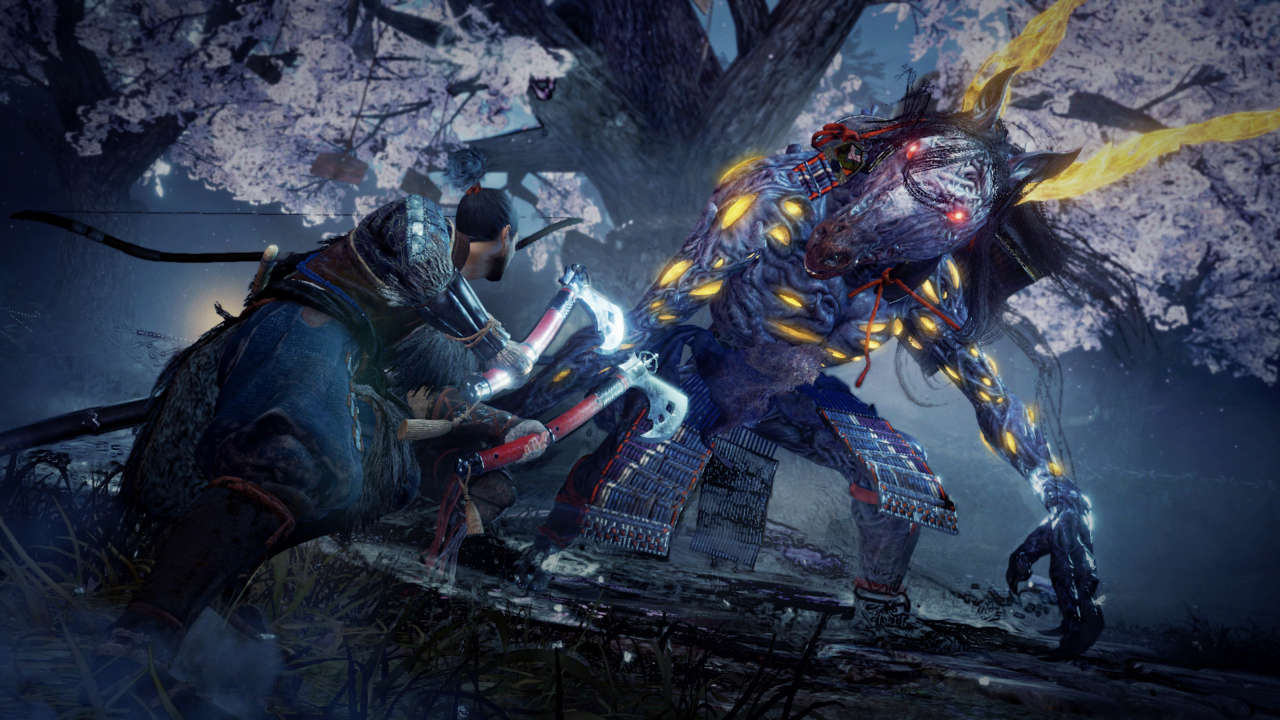Freed from this mortal coil
With its Last Chance Trial now finished, showing off how Nioh 2 has changed since its early alphas, the sequel is less than a week away from dropping, kicking off a deluge of new games for 2020.
Since Team Ninja takes feedback seriously, and frequently makes changes based on it, these recent demos might be a deciding factor for both returning players and newcomers who want to jump in on the prequel. Personally, I absolutely loved the first Nioh and enjoyed my time with the demos, but what are your thoughts?
One of the biggest things Team Ninja tinkered with, based on early feedback, was the Ki, (or stamina) regeneration. In earlier demos, I struggled to conserve Ki in most fights and entering the Dark Realm, where Ki regen is stifled even more, had me thinking up ways to circumvent it rather than confront it. While William from Nioh was swimming in Ki, your custom character in Nioh 2 was anemic by comparison.

The Last Chance Trial tweaked Ki regeneration to be more in the player’s favor. While it’s still noticeably slower to generate than the first Nioh, it certainly feels like a merciful buff compared to the initial build. Some experienced players report that leveling Courage to 20 will bring Ki regen closer in line to what it was like in Nioh, so time will tell what builds will be like in terms of mandatory attributes.
The Last Chance Trial also gave way to a better understanding of Nioh 2’s new Burst Counter system. Yokai seemed easier to stagger and more people online used them when possible, at least from what I saw during co-op. The Brute form certainly seemed more popular due to the fact that it doesn’t function like a counter, but rather a pre-emptive attack, staggering on hit. Even the other yokai forms – Feral and Phantom – had easier windows. Combined with the Soul Cores (yokai skills) that drop, Nioh 2 is really playing to its yokai theme when compared to the original.
While every weapon has received one or two new skills to play around with, probably the biggest thing to change about Nioh‘s lauded combat system is the addition of two new weapons, the dual hatchets and the switchglaive. While the dual hatchets have several skills that involve throwing them at enemies and pulling out more, the switchglaive is a big deal because it scales off of magic, giving mage players a weapon to incorporate into their builds, similar to how Ninjutsu players could use the kusarigama. Changing stances changes the switchglaive’s form: a scythe in high stance; a polearm in middle stance; and a compact blade called “Guillotine Mode” in low. These forms respectively offer high damage, long reach, and fast strikes.
Speaking of Onmyo and Ninjutsu, progression for these skills and other weapons has also been streamlined. Previously, gaining points to increase Onmyo magic and Ninjutsu were somewhat limited, mainly to using the relevant locks of hair. Now, you simply gain points for performing their related actions, so repeated use of spells or skills will give you proficiency points. Making a Ninjutsu build in the first game was relatively simple, but making a caster was more difficult, due to lacking a weapon that uses the magic attribute and acquiring Onmyo points.

Overall, I think Team Ninja has done quite a surprising job, both in tuning the game based on feedback from the demos and its own experience with the original Nioh. There’s also a ton of smaller in-game elements that have been added or tweaked, for example tempering replacing reforging in order to re-roll skills on equipment, while the endgame Mystic Arts have been changed entirely.
I wasn’t sure how much Nioh 2 had changed, but after the demos, I’m sold on its expanded experience.


